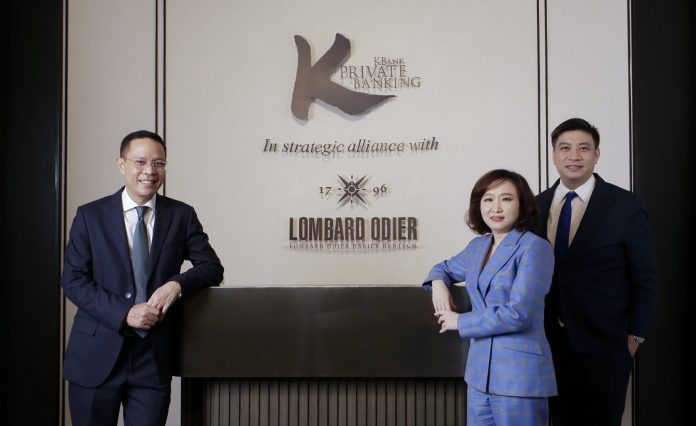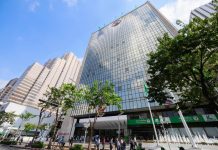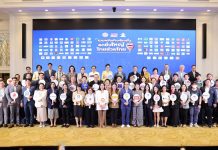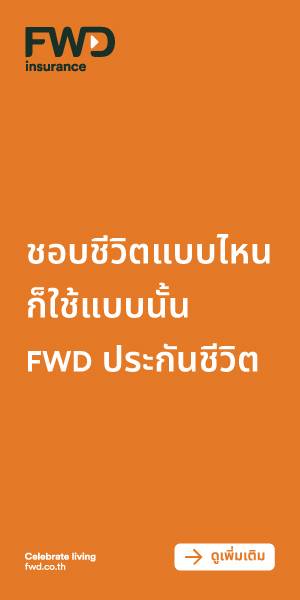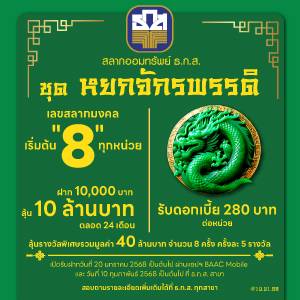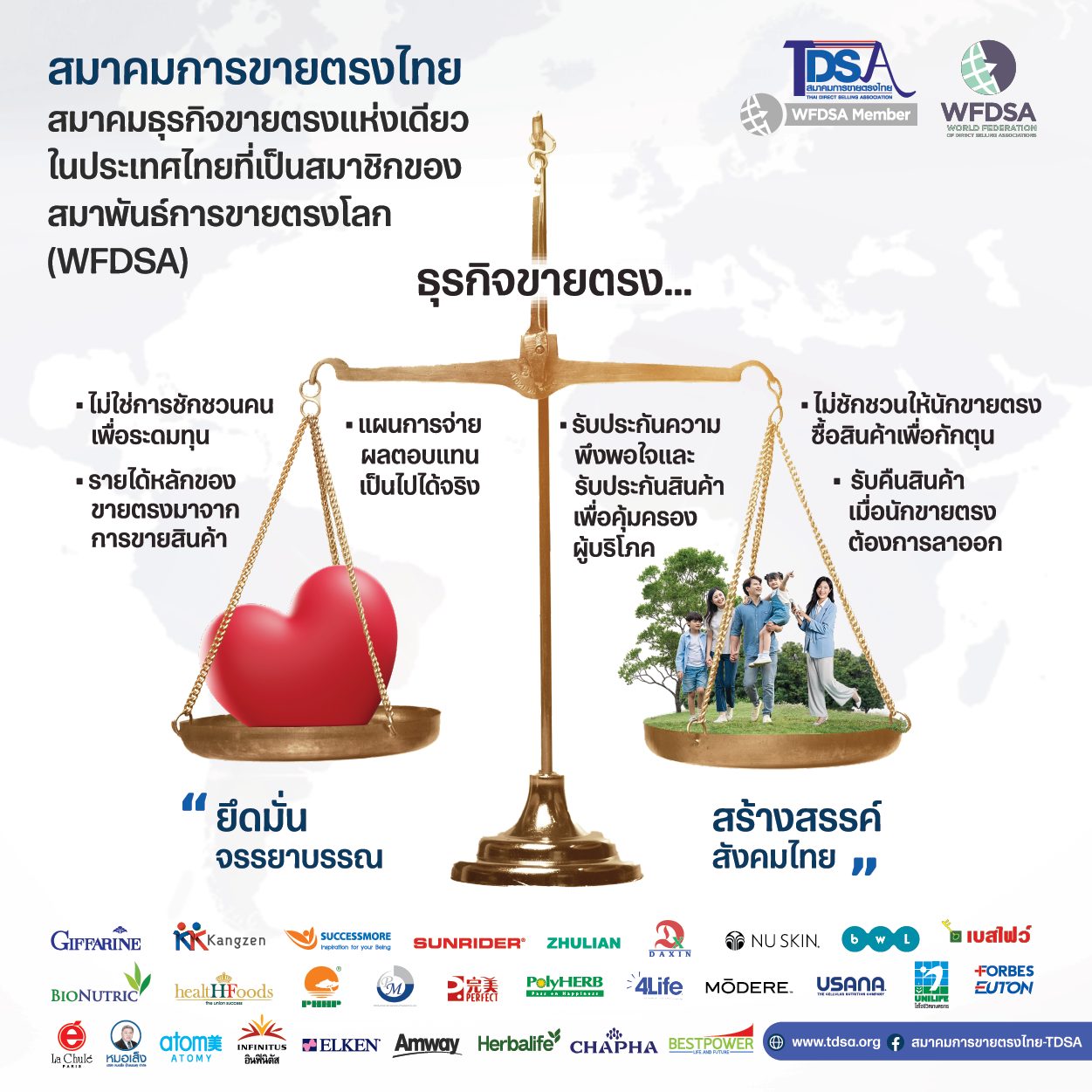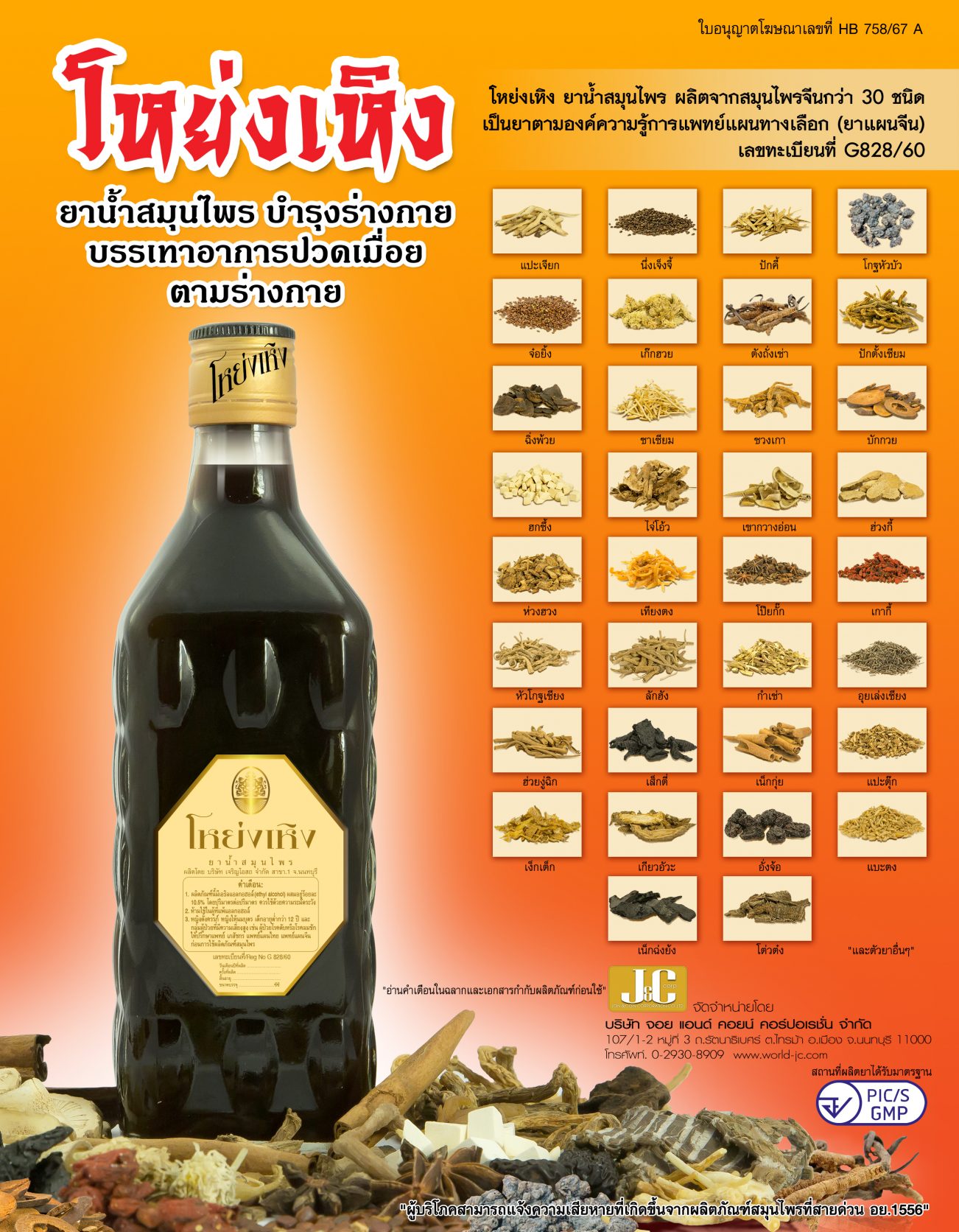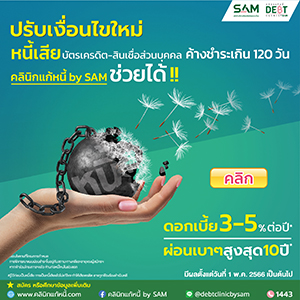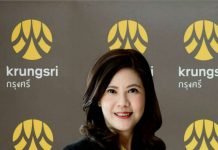KBank Private Banking ร่วมกับ Lombard Odier พันธมิตรทางธุรกิจ ไพรเวทแบงก์ระดับโลกจากสวิตเซอร์แลนด์ คาดการณ์เศรษฐกิจโลกในครึ่งหลังของปี 2565 ได้รับผลกระทบจากนโยบายการเงินที่ตึงตัวขึ้นของสหรัฐฯ แต่ยังประเมินว่าเศรษฐกิจมีโอกาสชะลอตัวแบบซอฟท์แลนดิ้งได้ หากธนาคารกลางสหรัฐฯ (Fed) หรือ เฟด สามารถควบคุมเงินเฟ้อได้ พร้อมเผยคำแนะนำการลงทุนในภาวะตลาดขาลงในช่วงครึ่งหลังของปี แนะนักลงทุนเน้นกระจายลงทุนในสินทรัพย์ที่หลากหลาย เพิ่มน้ำหนักลงทุนในหุ้นคุณค่า หุ้นจีน พันธบัตรรัฐบาลในประเทศพัฒนาแล้ว รวมทั้งชี้โอกาสลงทุนในสินทรัพย์ทางเลือกและหุ้นนอกตลาดสะสมความมั่งคั่งในระยะยาวท่ามกลางภาวะผันผวน
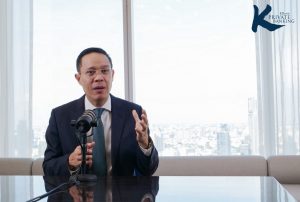
นายจิรวัฒน์ สุภรณ์ไพบูลย์ Executive Chairman, Private Banking Group ธนาคารกสิกรไทย เปิดเผยว่า ตั้งแต่ต้นปีตลาดลงทุนมีความกังวลต่อเงินเฟ้อสหรัฐฯ ที่พุ่งขึ้นอย่างต่อเนื่อง ซึ่งจะกดดันแนวโน้มการปรับขึ้นอัตราดอกเบี้ยของเฟดให้เกิดขึ้นแบบรุนแรงและรวดเร็ว ต่อมาในเดือนกุมภาพันธ์สงครามระหว่างรัสเซียและยูเครนได้ปะทุขึ้น ทำให้ตลาดกังวลต่อปัญหาการขาดแคลนน้ำมันดิบและวัตถุดิบต่าง ๆ ส่งผลให้ราคาน้ำมันขยับตัวสูงขึ้นอย่างต่อเนื่องซ้ำเติมปัญหาเงินเฟ้อทั่วโลกที่ทรงตัวในระดับสูงอยู่แล้ว จึงทำให้ในช่วงกลางเดือนมีนาคม เฟด มีมติปรับขึ้นดอกเบี้ยครั้งแรกตั้งแต่ปี 2561 ที่ 0.25% ซึ่งเป็นเพียงแค่จุดเริ่มต้นเท่านั้น เพราะ ล่าสุดเงินเฟ้อทั่วไปของสหรัฐฯ ในเดือนพฤษภาคมปรับขึ้นเกินกว่าที่ตลาดคาด โดยทำจุดสูงสุดใหม่ในรอบ 40 ปี ที่ 8.6% เมื่อเทียบปีต่อปี จากราคาพลังงานที่กลับมาพุ่งสูงขึ้นอีกครั้ง หลังจากจีนผ่อนคลายล็อคดาวน์ ทำให้ตลาดคาดว่าเฟด จะต้องเร่งขึ้นดอกเบี้ยเพื่อสะกัดเงินเฟ้อ ซึ่งทุกๆ เหตุการณ์สำคัญเหล่านี้ล่วนส่งผลกระทบต่อราคาหุ้นทั่วโลกปรับตัวลดลง จากการที่นักลงทุนเทขายสินทรัพย์เสี่ยง และเข้าถือเงินสดมากขึ้น
ด้านนางสาวศิริพร สุวรรณการ Senior Managing Director, Financial Advisory Head, Private Banking Group ธนาคารกสิกรไทย กล่าวเพิ่มเติมว่า ตลาดการลงทุนในช่วงนี้ผันผวนกว่าปกติ ผลตอบแทนจากสินทรัพย์ต่างๆ อยู่ในทิศทางขาลงจากข่าวร้าย ไม่ว่าจะเป็น อัตราเงินเฟ้อสหรัฐฯ ที่ยังคงปรับเพิ่มขึ้น และยังไม่เข้าสู่แนวโน้มขาลงตามเป้าหมายของเฟด จากราคาพลังงานและบริการที่ปรับเพิ่มขึ้น ทำให้นโยบายการเงินมีทิศทางตึงตัวขึ้นอย่างมีนัยสำคัญ โดยจากการประชุมครั้งล่าสุดในวันที่ 14-15 มิถุนายนที่ผ่านมา เฟด ได้มีมติขึ้นดอกเบี้ย 0.75% ในครั้งเดียว เป็นไปตามตลาดคาด ทำให้ดอกเบี้ยนโยบายปัจจุบันของเฟด อยู่ที่ 1.5-1.75% พร้อมทั้งส่งสัญญาณขึ้นดอกเบี้ยในอัตราที่เร่งขึ้น โดยจะขึ้นดอกเบี้ยอีกทั้งหมด 1.75% ในการประชุมช่วงที่เหลือของปีนี้ ทำให้ดอกเบี้ย ณ สิ้นปี 2565 อยู่ที่ 3.4% มากกว่าเดิมที่ประเมินไว้ในการประชุมเดือนมีนาคมที่ 1.9% ทั้งนี้ ด้านภาพรวมเศรษฐกิจสหรัฐฯ ยังคงฟื้นตัวอย่างแข็งแกร่ง ตลาดแรงงานยังคงตึงตัว โดยอัตราการว่างงานยังใกล้ระดับต่ำสุดเป็นประวัติการณ์ แม้จะเริ่มมีสัญญาณลบจากตลาดบ้านบ้าง หลังจากแนวโน้มดอกเบี้ยที่ปรับเพิ่มขึ้น ซึ่งส่งผลต่อความสามารถในการซื้อทำให้ยอดขายบ้านลดลง
ด้านจีนที่ค่อยๆ กลับมาเปิดประเทศอีกครั้งในแบบระมัดระวัง หลังยอดตัวเลขผู้ติดเชื้อลดลงแสดงให้เห็นว่ามาตรการการล็อคดาวน์ได้ผล อย่างไรก็ตาม แม้จำนวนผู้ติดเชื้อในจีนจะลดลง แต่แนวโน้มผู้ติดเชื้อที่อื่น ๆ ในเอเชีย อย่างฮ่องกงและเกาหลีใต้กลับเพิ่มขึ้น ซึ่งอาจทำให้จีนต้องกลับมาใช้มาตรการ Zero COVID จนถึงไตรมาส 3 และถ้าหากจีนกลับมาล็อคดาวน์ก็จะส่งผลต่อห่วงโซ่อุปทานทั่วโลกอีกครั้ง เช่นเดียวกันกับสงครามรัสเซีย – ยูเครนที่ยังคงยืดเยื้อ ก็ทำให้เศรษฐกิจโลกได้รับผลกระทบจากการเผชิญปัญหาห่วงโซ่อุปทานเช่นกัน สำหรับความเป็นไปได้ต่อไปของสถานการณ์ระหว่างรัสเซีย – ยูเครนที่จะส่งผลกระทบต่อเศรษฐกิจระดับมหภาคทั่วโลก แบ่งเป็น 3 กรณี คือ 1) สงครามยืดเยื้อ กระทบต่อห่วงโซ่อุปทาน ความน่าจะเป็น: สูง ส่งผลให้ GDP โลก ลดลง 1% 2) สงครามทวีความรุนแรงและรวดเร็ว เกิดความขัดแย้งทางภูมิรัฐศาสตร์ทั่วโลก ความน่าจะเป็น: ต่ำ ส่งผลให้ GDP โลก ลดลง 2% 3) ความขัดแย้งคลี่คลาย ความน่าจะเป็น: ต่ำกว่า ส่งผลให้ GDP โลก ลดลง 0.5%
ดร.ตรีพล ภูมิวสนะ Senior Managing Director, Private Banking Business Head, Private Banking Group ธนาคารกสิกรไทย กล่าวว่า ในช่วงสองสามเดือนที่ผ่านมา ดัชนีชี้วัดเศรษฐกิจโลกลดลงอย่างมีนัยสำคัญ ซึ่งแนวโน้มชะลอตัวลงต่อเนื่องนี้เข้าใกล้เกณฑ์หดตัว ทำให้มีโอกาสเกิดภาวะเศรษฐกิจถดถอย อาจนำไปสู่ตลาดหมีหรือตลาดขาลง ในสภาวะเศรษฐกิจและตลาดเช่นนี้ KBank Private Banking และ Lombard Odier ยังคงเน้นย้ำกลยุทธ์การลงทุนแบบกระจายความเสี่ยง โดยแนะนำให้ปรับกลยุทธ์และสัดส่วนการลงทุนในประเภทสินทรัพย์สำหรับครึ่งปีหลัง 2565 ดังนี้
| ประเภทสินทรัพย์ | น้ำหนัก | ด้วยสาเหตุ |
| Cash (เงินสด) | 2% | ลดสัดส่วนการถือครองเงินสด เพื่อไปลงทุนในตราสารหนี้มากขึ้น |
| Fixed Income (ตราสารหนี้) | 36% | เพิ่มน้ำหนักการลงทุน เนื่องอัตราผลตอบแทนส่วนเพิ่มจากพันธบัตรรัฐบาล น่าสนใจมากขึ้น |
| Equities (หุ้น) | 45% | คงน้ำหนักการลงทุนในหุ้น
ถ้าหากความขัดแย้งระหว่างรัสเซีย-ยูเครนคลี่คลาย และเศรษฐกิจโลกรอดพ้นสภาวะเศรษฐกิจถดถอย จะหนุนการลงทุนในหุ้น Valuation อยู่ในเกณฑ์น่าสนใจมากขึ้นหลังตลาดหุ้นปรับลงแรงจาก Sentiment เชิงลบ |
| Alternative (สินทรัพย์ทางเลือก) | 17% | เพิ่มน้ำหนักการลงทุนในอสังหาริมทรัพย์ในยุโรป คาดว่าสินทรัพย์กลุ่มคุณค่า (Value) จะฟื้นตัวได้ดี
ลดน้ำหนักการลงทุนในทองคำ แต่ให้น้ำหนักลงทุนในสินค้าโภคภัณฑ์เพื่อกระจายความเสี่ยง |
นายจิรวัฒน์ สุภรณ์ไพบูลย์ Private Banking Group Head ธนาคารกสิกรไทย กล่าวในตอนท้ายว่า ธนาคารยังคงแนะนำกระจายการลงทุนในหลายๆ สินทรัพย์ผ่านกองทุนผสมเพื่อลดความเสี่ยงโดยรวมของพอร์ตลง โดยกองทุนผสมอย่าง K-ALLROAD Series ที่ได้เปิดตัวไปตั้งแต่ช่วงปลายปีที่ผ่านมา ปัจจุบันมีขนาดของกองทุนรวมกว่า 6 พันล้านบาท* ซึ่งได้รับกระแสตอบรับที่ดีจากลูกค้า ด้วยสภาพตลาดการลงทุนในปัจจุบัน ธนาคารยังแนะนำให้ลูกค้ากระจายการลงทุนไปในสินทรัพย์ทางเลือกอื่นๆ เช่น กองทุนหุ้นนอกตลาด (Private Equity Fund) ซึ่งกองทุนที่ธนาคารแนะนำสามารถสร้างผลตอบแทนตั้งแต่จัดตั้งกองทุนที่ดีให้กับพอร์ตลูกค้าได้สูงถึง 61.4%** และ 12.8%**
นอกจากนี้ ตลอดครึ่งปีหลัง 2565 ธนาคารยังมีแผนที่จะแนะนำผลิตภัณฑ์ทางเลือกการลงทุนอื่น เช่น Sustainable Global Balanced (กองทุนผสมที่เน้นลงทุนแบบยั่งยืน), China Sustainable Equity (หุ้นจีนที่เป็น ธีมหุ้นยั่งยืน), Global Private Debt (ตราสารหนี้นอกตลาดทั่วโลก), Global Private Equity (กองทุนหุ้นนอกตลาดทั่วโลก), Hybrid Global Private Asset (สินทรัพย์นอกตลาด), Global and Local Private Real Estate(อสังหาริมทรัพย์นอกตลาด), Quantitative Hedged Fund Strategy (กองทุน Hedge Fund ที่ใช้กลยุทธ์การลงทุนด้วยกระบวนการคณิตศาสตร์และสถิติจากข้อมูลเชิงปริมาณ) และ Exotic Structured Note (หุ้นกู้ที่มีอนุพันธ์แฝงแบบต่างๆ) เพื่อกระจายความเสี่ยงและเพื่อสร้างผลตอบแทนที่น่าพึงพอใจให้กับพอร์ตการลงทุนของลูกค้าได้ในปี 2565 นี้
สำหรับผู้ที่สนใจรับชมงานสัมมนา KBank Private Banking 2022 Mid-year Economic and Investment Outlook ในหัวข้อ Can the Global Economy Pull off a Soft Landing? ย้อนหลัง โดยสามารถคลิกรับชมได้ที่ https://www.youtube.com/watch?v=XHDoH94KVLU
หมายเหตุ: ตำแหน่งผู้บริหารเขียนทับศัพท์ภาษาไทย
นายจิรวัฒน์ สุภรณ์ไพบูลย์ เอ็กซ์เซกคูทีฟ แชร์แมน ไพรเวท แบงกิ้ง กรุ๊ป ธนาคารกสิกรไทย
นางสาวศิริพร สุวรรณการ ซีเนียร์ แมเนจิ้ง ไดเรคเตอร์- ไฟแนนเชียล แอดไวเซอรี เฮด ไพรเวท แบงกิ้ง กรุ๊ป ธนาคารกสิกรไทย
ดร.ตรีพล ภูมิวสนะ ซีเนียร์ แมเนจิ้ง ไดเรคเตอร์-ไพรเวท แบงกิ้ง บิซิเนส เฮด ไพรเวท แบงกิ้ง กรุ๊ป ธนาคารกสิกรไทย
* ข้อมูล ณ วันที่ 9 มิถุนายน 2565
** ผลตอบแทนตั้งแต่จัดตั้งกองทุนจนถึงปัจจุบัน (ข้อมูล ณ วันที่ 31 พฤษภาคม 2565)
KBank Private Banking and Lombard Odier forecast that the global economy may be headed for a ‘soft landing’ during 2H2022, recommending diversified portfolios with multiple and alternative assets that offer investment opportunities
KBank Private Banking (KPB) in strategic alliance with Lombard Odier, a leading global private bank from Switzerland, forecast that the global economy for the second half of 2022 will bear the effect of the US’s tightening monetary policy. However, a soft landing is possible if the Federal Reserve (Fed) can get inflation under control. Amid the bearish market outlook during the latter half of this year, investors are recommended to diversify their portfolios with numerous assets. Focus should be on value stocks, Chinese equities and government bonds of developed countries. Moreover, opportunity is abounding for alternative assets and private equities which can serve as long-term investment vehicles amid a volatile market environment.
Mr. Jirawat Supornpaibul, Executive Chairman, Private Banking Group, KASIKORNBANK, said that since early this year, capital markets have been concerned about runaway inflation as it would induce the Fed to hike interest rates at more pronounced and rapid rates. In February, the Russia-Ukraine war led to anxiety about shortages of crude oil and other raw materials. The elevated oil prices further exacerbated global inflation that had been soaring for some time. During mid-March, the Fed resolved to raise its policy rate by 25 basis points – the first interest rate hike since 2018. That was as inflationary pressures were just beginning to become apparent. In the latest development, US headline inflation for May accelerated to a 40-year high of 8.6 percent YoY, which was higher than expected. The surge in inflation came mainly from skyrocketing energy prices as China relaxed its lockdown measures. This prompted the market to fear that the Fed might opt for more dramatic rate hikes in order to tame inflation. Under these circumstances, global stocks went into a panic as investors swiftly sold off their risk assets and shifted to cash instead.
Ms. Siriporn Suwannakarn, Senior Managing Director – Financial Advisory Head of Private Banking Group, KASIKORNBANK, added that investment markets are now facing unusual volatility, while returns on various assets have been on a downtrend due to multiple negative factors, including the US inflation rate that has not entered a downward trend per the Fed’s target, amid surging energy and service prices. Consequently, US monetary policy has been significantly tightened, as evidenced by the latest Fed resolution to increase its policy rate by 0.75 percent in its meeting of June 14-15, in line with market expectations. At present, the policy rate stands at 1.5-1.75 percent, with signals of more rapid rate increases totaling 1.75 percent in the remaining meetings of this year to reach up to 3.4 percent by year-end, which is higher than the estimate made in the March meeting, As for the overall US economy, its recovery remains strong, while the employment market is in a tight position with the unemployment rate moving towards its historically lowest level. Some negative signs have been seen in the property market, as the interest rate hike has affected consumer purchasing power and therefore lowered home sales.
Meanwhile, China has cautiously reopened their borders after the number of infected COVID-19 persons decreased – a proof of successful lockdown measures. However, increases in infected persons in other parts of Asia have been reported, for example, in Hong Kong and South Korea, which may cause China to resume its zero-COVID measures until the third quarter of this year. If so, global supply chains will be affected once again. Meanwhile, the persistent Russia-Ukraine crisis will also produce adverse impacts on global supply chains. There are three possible scenarios for developments in the Russia-Ukraine conflict that could affect the global economy at the macro level: 1) The persistent war hurts supply chains. The likelihood of this scenario is high. If it were to happen, global GPD growth would decline by 1 percent; 2) The war quickly escalates to an extent that it triggers global geopolitical conflict. The likelihood of this scenario is low. But, if it were to happen, global GDP growth would fall by 2 percent; and 3) The conflict eventually eases. Though this scenario is seemingly out of reach, if it were to happen, global GDP growth would drop by only 0.5 percent.
Dr. Triphon Phumiwasana, Senior Managing Director, Private Banking Business Head, KBank Private Banking Group, said that a significant decline in the Global Economic Index has been seen over the past few months. Since it is approaching a contraction, the world economy could be heading for a recession, thus pushing stock trading into a bear market. In such economic and market conditions, KBank Private Banking and Lombard Odier will continue to place emphasis on diversification. Given this, investors are advised to adjust their investment strategies and portfolios during the second half of 2022, as follows:
| Asset types | Weight | Reasons |
| Cash | 2% | Back to Under-weight Redeploying cash buffer into IG and credit |
| Fixed Income | 36% | Reduced Under-weight
IG Spreads and yields have improve attractiveness |
| Equities | 45% | Neutral Equities (Under-weight with puts)
Medium term outlook supportive if there is meaningful de-escalation and recession is avoided Valuations have improved and sentiment is clearly bearish, but outflows just started |
| Alternative assets | 17% | Over-weight European Real Estate on expectation of value sectors recovring
Under-weight Gold but compensated by Over-weight Broad commodities as diversifer |
Mr. Jirawat added that KBank will continue to advise clients to focus on diversification of various assets via mixed funds in order to reduce overall portfolio risk. Mixed funds such as the K-ALLROAD Series, which was unveiled at the end of 2021, has a current size of over 6 billion Baht*. It has garnered favorable response from customers given the prevailing investment and market conditions. KBank continues to advise clients to diversify their investment towards other alternative assets such as private equity funds. The PE funds recommended by KBank Private Banking have generated favorable returns of up to 61.4 percent** and 12.8 percent** for customers’ portfolios since their inception.
In addition, during the second half of 2022, KBank also plans to introduce other alternative investment products – i.e. Sustainable Global Balanced, China Sustainable Equity, Global Private Debt, Global Private Equity, Hybrid Global Private Asset, Global and Local Private Real Estate, Quantitative Hedged Fund Strategy, and Exotic Structured Note – to diversify risks and to offer favorable returns for customers’ investment portfolios in 2022.
The KBank Private Banking 2022 Mid-year Economic and Investment Outlook seminar titled “Can the Global Economy Pull off a Soft Landing?” can be viewed via https://www.youtube.com/watch?v=XHDoH94KVLU.
* Data as of June 9, 2022
** Returns from the inception date to the present (Data as of May 31, 2022)



